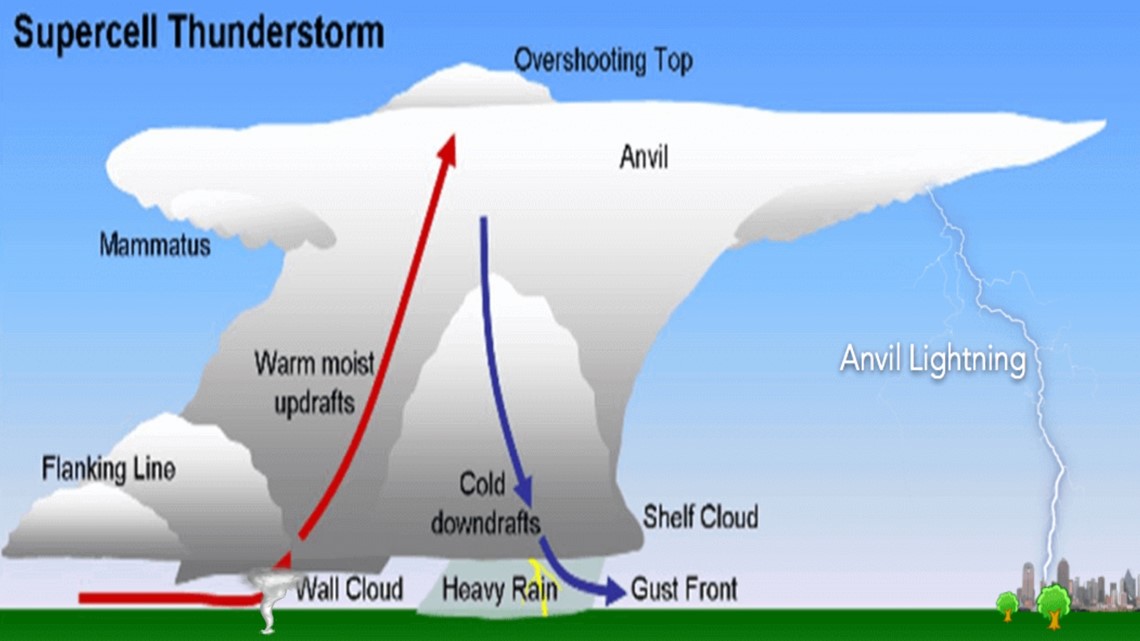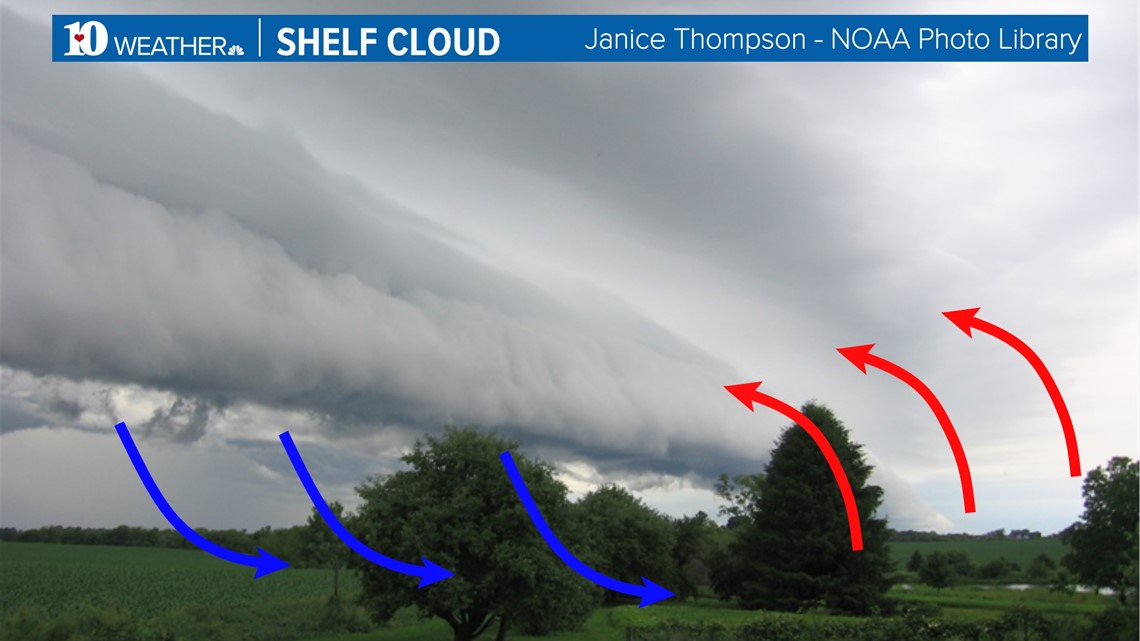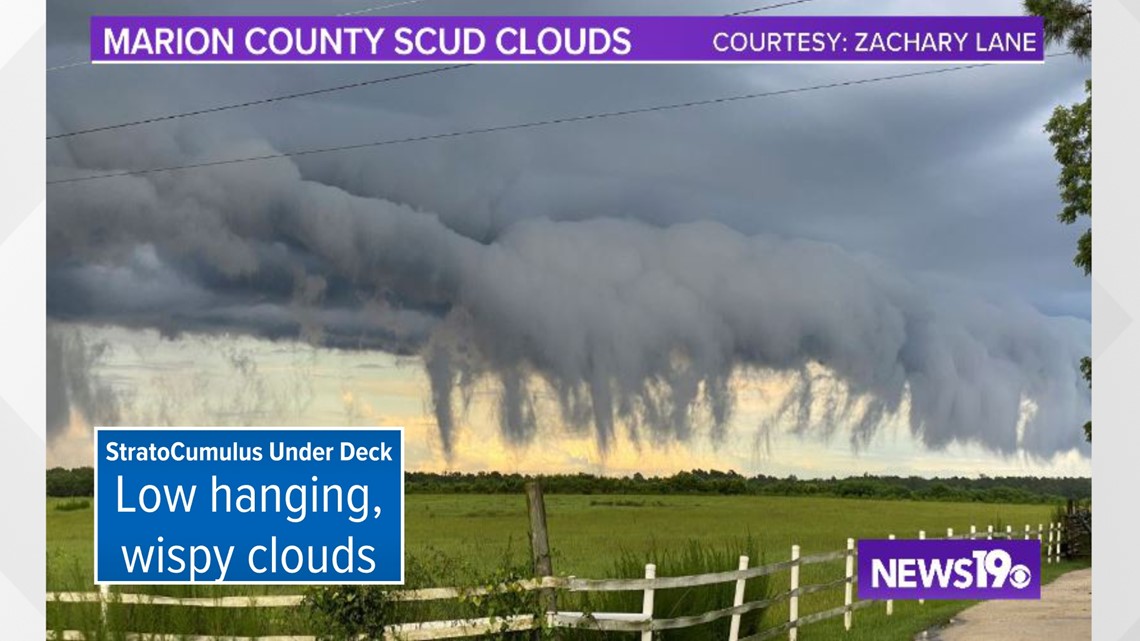KNOXVILLE, Tenn. — East Tennessee had a surprising tornado outbreak when the National Weather Service stations in Morristown and Nashville determined there were four tornadoes. All this happened when East Tennessee is supposed to be entering a quieter tornado season during the summer months.
Viewers played a large part by sending in a plethora of pictures and videos, which led to questions. Primarily, what's the difference between a funnel cloud and a tornado?
Before getting to that, it's important to know how a tornado forms. It starts with surface winds combined with stronger and faster upper-level winds. The difference in velocity between them, also known as wind shear, creates a rotating column of air horizontally.
When combined with rising warm air, the updraft is created, which becomes the center of the low-pressure system. Once that rotation is well-defined within the cloud base, the wall cloud is formed — it's a bulge downward from the cloud base. Once the wall cloud is established, the rotational funnel will attempt the reach the ground.
If it doesn't reach the ground, it's considered a funnel cloud. If it does, then it's officially a tornado. That's the only difference.
Sometimes, tornadoes can be hard to see and in these cases, look for debris being kicked up around the center. That could be proof that the tornado has touched down.
There are other parts of the thunderstorm that may look threatening but will not create tornadoes.


One of those is the shelf cloud. It's a low-level, horizontal line of clouds that move in front of supercells. They form from the gust front, cold air rushing out of the front of the storm, forcibly lifting the warm air ahead of it.
This is why you feel such gusty winds before a storm hits. There's no rotation in the shelf cloud, so tornadoes will not form here.


Another is scud clouds. They're close to the ground, sometimes dark, and wispy, which can strike fear in some. The truth is, they're just small clouds that formed before making it higher into the atmosphere. They may drop a few sprinkles, but they're harmless.


The best way to know if something dangerous is approaching is by looking for fast rotation of winds and clouds. If you're unfamiliar with what you're seeing, head indoors and turn on your local forecast.

